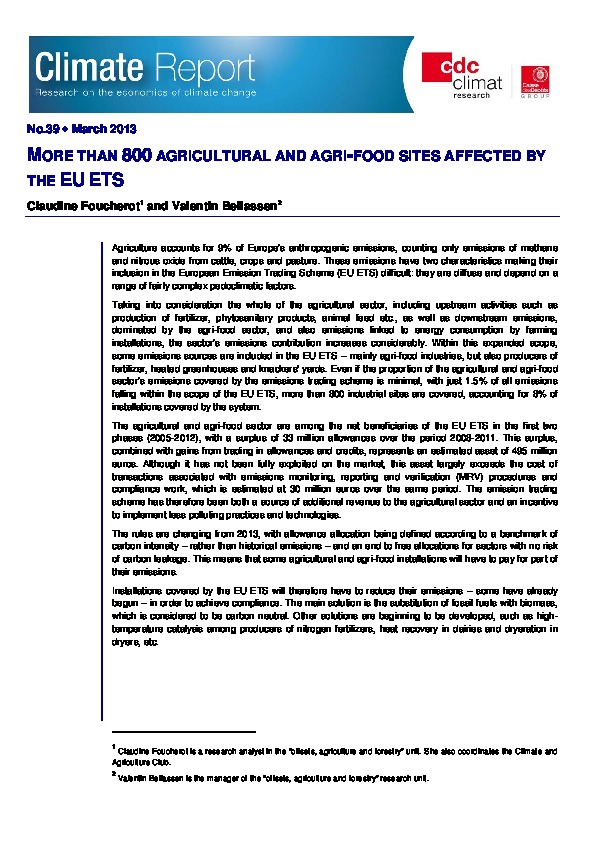More than 800 agricultural and agri-food sites affected by the eu ets
By Claudine Foucherot and Valentin Bellassen
… counting only emissions of methane and nitrous oxide from cattle, crops and pasture. These emissions have two characteristics making their inclusion in the European Emission Trading Scheme (EU ETS) difficult: they are diffuse and depend on a range of fairly complex pedoclimatic factors.
Taking into consideration the whole of the agricultural sector, including upstream activities such as production of fertilizer, phytosanitary products, animal feed etc., as well as downstream emissions, dominated by the agri-food sector, and also emissions linked to energy consumption by farming installations, the sector’s emissions contribution increases considerably. Within this expanded scope, some emissions sources are included in the EU ETS – mainly agri-food industries, but also producers of fertilizer, heated greenhouses and knackers’ yards. Even if the proportion of the agricultural and agri-food sector’s emissions covered by the emissions trading scheme is minimal, with just 1.5% of all emissions falling within the scope of the EU ETS, more than 800 industrial sites are covered, accounting for 8% of installations covered by the system.
